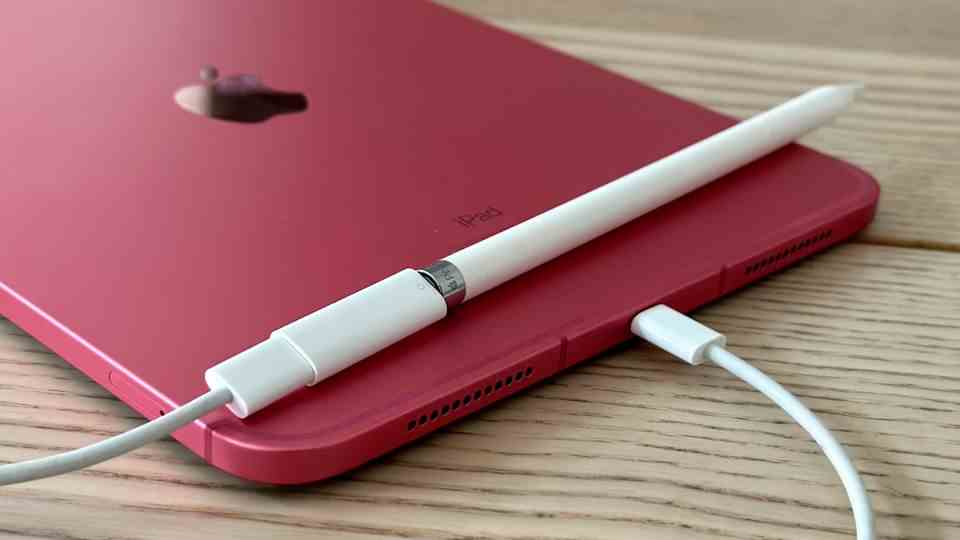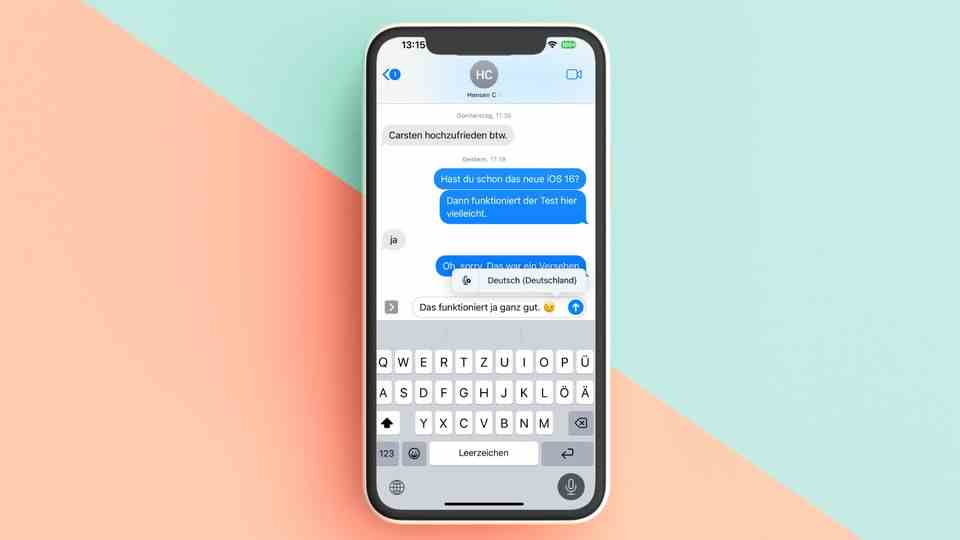With the tenth generation of the iPad, Apple has given its basic model a makeover. In the test, it proves to be a strong entry-level device. However, there is still no clear recommendation to buy.
Inexpensive, simple, reliable – that has been the motto of the entry-level iPad so far. With the tenth generation just introduced, Apple has upgraded it enormously. But that, of all things, could make it less attractive for many customers. One wishes for a new feature after the test for every other iPad.
You can see at first glance that the tenth generation will be a major turning point. The new, very bright colors are the smallest change. After the basic iPad was the last model to use the classic design with a rounded back, the angular new Apple look has now moved in here too. Like the iPad Pro, the iPhone and also the newer Mac notebooks, the entry-level iPad now also has clear metal edges on the side. This not only brings a new look – it also has consequences for use.
New and yet familiar
On the one hand there is the revised front. Apart from the iPhone SE, the base iPad was the last Apple device with a home button. It’s passé now: As with the expensive models, the edges of the display have been reduced, and the screen covers almost the entire front. This has an immediately visible advantage: the display diagonal has increased from 10.2 to 10.9 inches with almost the same housing dimensions.
Unlocking has also changed: As with the iPad Air, Apple continues to rely on a fingerprint scanner hidden in the power button on the side. And in the test, the iPad unlocked as quickly as usual. So far, so well known.

The tenth generation iPad now shares the design of the more expensive models. The front camera is located on the long side
© Malte Mansholt / star
Small change, big effect
Only at second glance do two further details of the design become apparent, which have surprisingly big consequences. For the first time, Apple has not placed the front camera on the short side, but in the middle of the long side. This is more than welcome, especially for video telephony in landscape format – for example in conferences or when making a facetime call with grandma. Finally, the other person no longer sees you strangely from the side, but from the front, as you are used to from a laptop.
Good: With a software trick, the 1080p camera adjusts the eyes so that they always appear as if you are looking straight into the camera. This makes the video calls more personal. Here the new entry-level iPad is clearly ahead of every more expensive model.
No less important is the switch to USB-C. The entry-level model is the last iPad to replace Apple’s own Lightning connector with the modern standard. And is thus extended to completely new usage scenarios. Like the expensive models, the cheapest iPad can now be used with countless devices at once, from the gamepad to the screen. Even a notebook dock with mouse, keyboard and monitor can be controlled, the iPad then becomes a desktop computer. Too bad: The expanded Stage Manager multitasking view introduced by Apple in the summer (find out more here) is not supported, it is reserved for the more expensive devices.
One step forward, one step back
The small iPad has one advantage when it comes to accessories: the Magic Keyboard Folio, which was only developed for the entry-level iPad, is significantly more flexible than the keyboards for the other models. It consists of two parts, the protective cover for the back including the stand can also be used without the keyboard. As a result, you don’t always have to carry the full weight with you if you just want to set up your tablet. The keyboard also has a good innovation: It offers full function keys, which can be used to control brightness, volume and media, just like on a notebook. Some users might only miss the missing backlight.
With the popular Apple Pencil, however, Apple made a rather bizarre decision: Instead of the second-generation Pencil, which was optimized for the angular design, the new iPad continues to support the first stylus. And that, although it is intended for the Lightning connector that is no longer available.
If you want to connect the pen now, you suddenly need an adapter. It comes with newly bought pens, if you already have one, you have to buy it later. However, the pen can still not be connected using an adapter: the double plug only allows the pen to be connected to the iPad via a USB-C cable. This does have one small advantage – the stylus no longer sticks out of the iPad while it’s charging – but overall it’s an unusually practical Apple development. However, it has to be said that the Apple Pencil came with an adapter right from the start: without it, it couldn’t be charged on the cable. The fact that you now need the adapter in order to be able to use the pen at all is even more impractical.

The fact that the Apple Pencil can only be connected to the iPad (2022) via a dongle is not very practical in everyday life
© Malte Mansholt / star
Fast enough
With the new A14 chip, the tenth generation iPad is faster than its predecessor, but it doesn’t come close to the rapid performance of the new iPads Pro or the iPad Air presented in spring. While the high-end models are equipped with Apple’s M series notebook processors and have thus become real working machines, the simple model has to be satisfied with an iPhone processor, which is also two years old. It is as performance-wise as the iPhone 12.
But that shouldn’t matter much to the average user: The iPad feels very fast in almost every everyday situation, and it doesn’t overwhelm it even with computationally intensive tasks such as games or simple image and video editing. Only if you have to do complex work on the device or want to be fit for the future for as long as possible, you really have to think about one of the more powerful devices in terms of computing power.
What is missing
In other respects there are much better reasons for this. As good as the new iPad is compared to its cheaper predecessors, there are still significant cuts compared to the more expensive devices.
In contrast to the more expensive series, the display of the cheap iPad is still not laminated, so it feels less high-quality. In addition, it is not protected against reflections, which can make it difficult to read in bright daylight. The fact that the color space is smaller and the adjustable frame rate of the Pro Motion display is missing is rather bearable.
Incidentally, when it comes to connectivity, the new iPad is on par with the more expensive ones: It also supports the modern WLAN standard Wifi 6, and the mobile version can now also connect via 5G.

No more bargain
However, the biggest shortcoming of the new iPad is its price: with a recommended retail price of 579 euros for the 64 GB model, it is significantly more expensive than the previous models when it was launched. The fact that their prices have fallen significantly since last year doesn’t make the situation any better: a ninth-generation iPad has long been available from reputable dealers for 350 euros – and is therefore over 200 euros cheaper. On the other hand, the technically better iPad Air with the M1 chip costs just under 70 euros more. And it not only offers significantly more performance, but also numerous detailed improvements such as the laminated display and support for the second Apple Pencil.
Verdict: The best entry-level iPad, but…
With the tenth generation of the iPad, Apple has given its cheapest tablet the modern look of the premium iPad. In combination with the new chip, the well-placed camera and the new Magic Keyboad Folio, it is not only more powerful but also looks fresher than its predecessor.
Unfortunately, there is more than one downer. The lack of support for the second Apple Pencil makes using the pen unnecessarily impractical. The significant price increase compared to the predecessor suddenly makes the device unattractive for many buyers. The placement between the ninth generation iPad, which is still available, and the iPad Air simply seems immature.
That Tenth generation iPad will be in stores from Friday, October 26, 2022 and costs from 579 euros.
This article contains so-called affiliate links. There is more information here.


